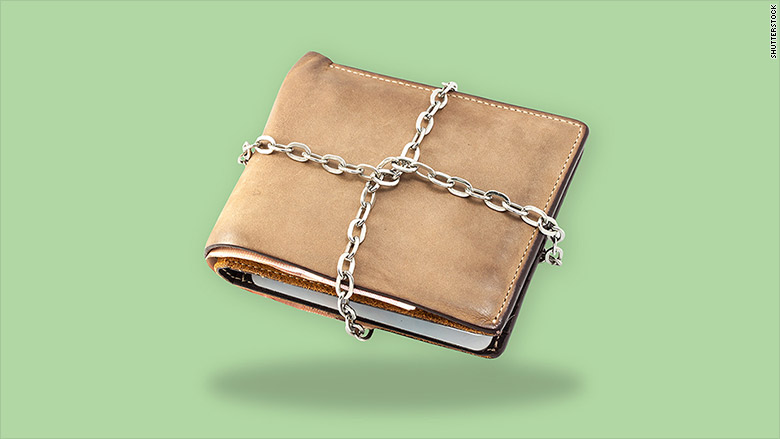
Consumer spending is often called an engine of the United States economy. That engine may be about to blow a gasket. Consumers are sitting on their wallets.
The government reported Monday that personal consumption expenditures -- aka consumer spending -- rose just 0.1% in February. That follows two months of declines of 0.2%.
It comes at a time when people actually do have a little bit more money to spend.
In the same report, the government said disposable personal incomes rose 0.4% in February, after rising 0.5% in January and 0.3% in December.
So what are consumers doing? Despite some headlines to the contrary, it appears that Americans are showing signs of fiscal responsibility. They are saving more.
Related: Janet Yellen says U.S. economy is not good enough yet
Mind you, they still may not be saving enough for things like retirement, a new house, or their kids' college education. But the savings rate rose to 5.8% in February -- the highest level since late 2012.
This is a bit of a surprise. Many economists were predicting that consumers would spend all that money they were saving from cheaper gas prices as if it were a tax refund check courtesy of OPEC.
But oil prices may have now stabilized. As such, economists at Barclays wrote Monday that "the boost from energy prices is fading."
Related: Half of Americans are saving next to nothing
They suggested that the awful winter weather could be one reason for soft consumer spending in February.
And Barclays is predicting that spending will rebound in the second quarter and the savings rate will fall.
Still, sluggish consumer spending could mean that the economy will report very little in the way of growth for the first quarter -- despite the continued strength of the labor market.
Related: The U.S. economy is showing cracks
The economy has been adding jobs at an impressive clip for the past year. And the unemployment rate has fallen.
But even though personal incomes are rising, wages have not risen that much to make consumers feel as if they are rolling in the dough.
That's because the personal income figure takes into account increases in other items such as interest and dividend payments on investments as well as Social Security, Medicare and other government safety net distributions.
So wages have to pick up more dramatically, or consumers may not be willing to spend more. And that's a proverbial Catch-22 for the economy.
Saving more is great for the long-term. But spending is what's needed to get the economy roaring again in the short run.


